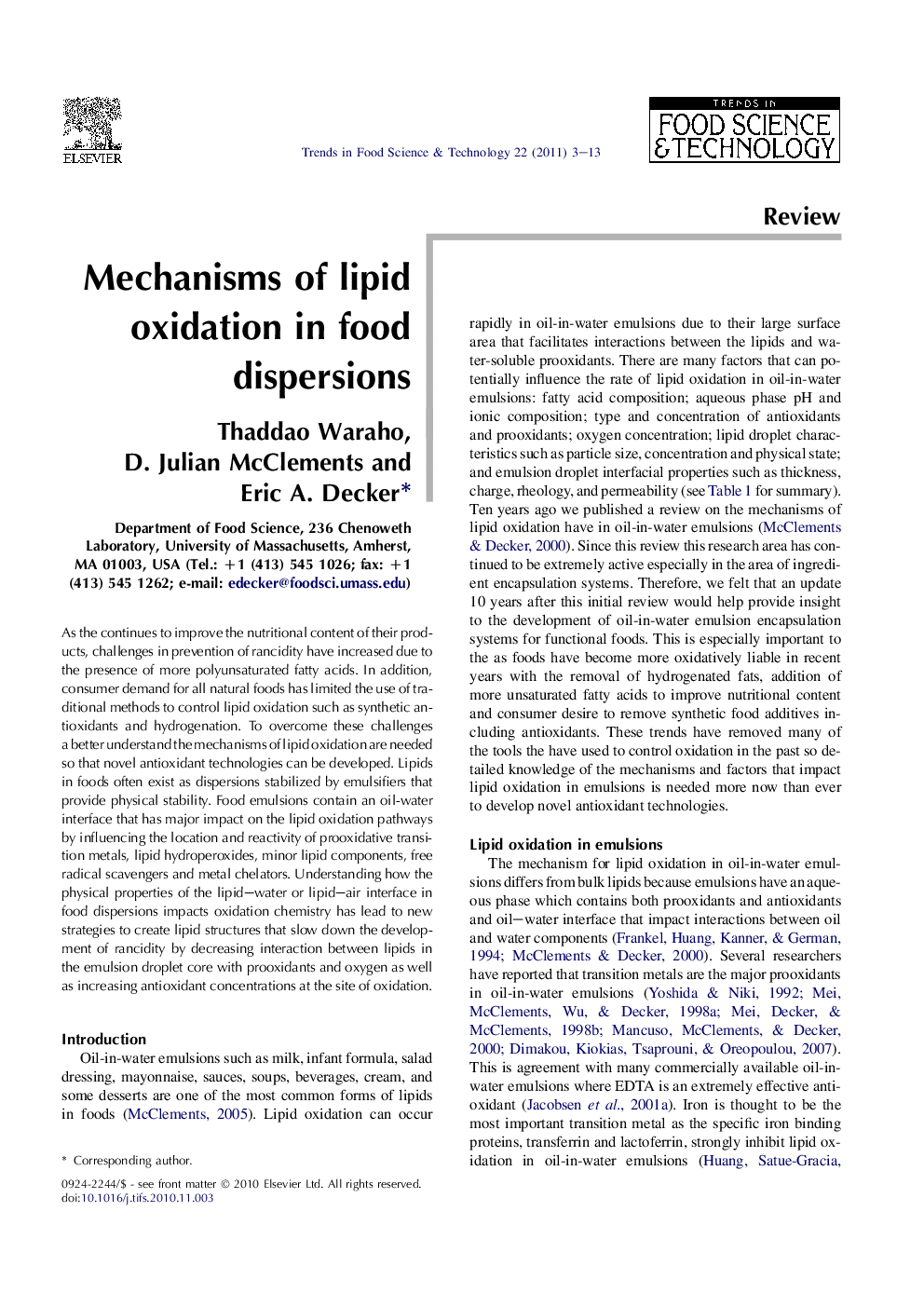| Article ID | Journal | Published Year | Pages | File Type |
|---|---|---|---|---|
| 2099047 | Trends in Food Science & Technology | 2011 | 11 Pages |
As the continues to improve the nutritional content of their products, challenges in prevention of rancidity have increased due to the presence of more polyunsaturated fatty acids. In addition, consumer demand for all natural foods has limited the use of traditional methods to control lipid oxidation such as synthetic antioxidants and hydrogenation. To overcome these challenges a better understand the mechanisms of lipid oxidation are needed so that novel antioxidant technologies can be developed. Lipids in foods often exist as dispersions stabilized by emulsifiers that provide physical stability. Food emulsions contain an oil-water interface that has major impact on the lipid oxidation pathways by influencing the location and reactivity of prooxidative transition metals, lipid hydroperoxides, minor lipid components, free radical scavengers and metal chelators. Understanding how the physical properties of the lipid–water or lipid–air interface in food dispersions impacts oxidation chemistry has lead to new strategies to create lipid structures that slow down the development of rancidity by decreasing interaction between lipids in the emulsion droplet core with prooxidants and oxygen as well as increasing antioxidant concentrations at the site of oxidation.
